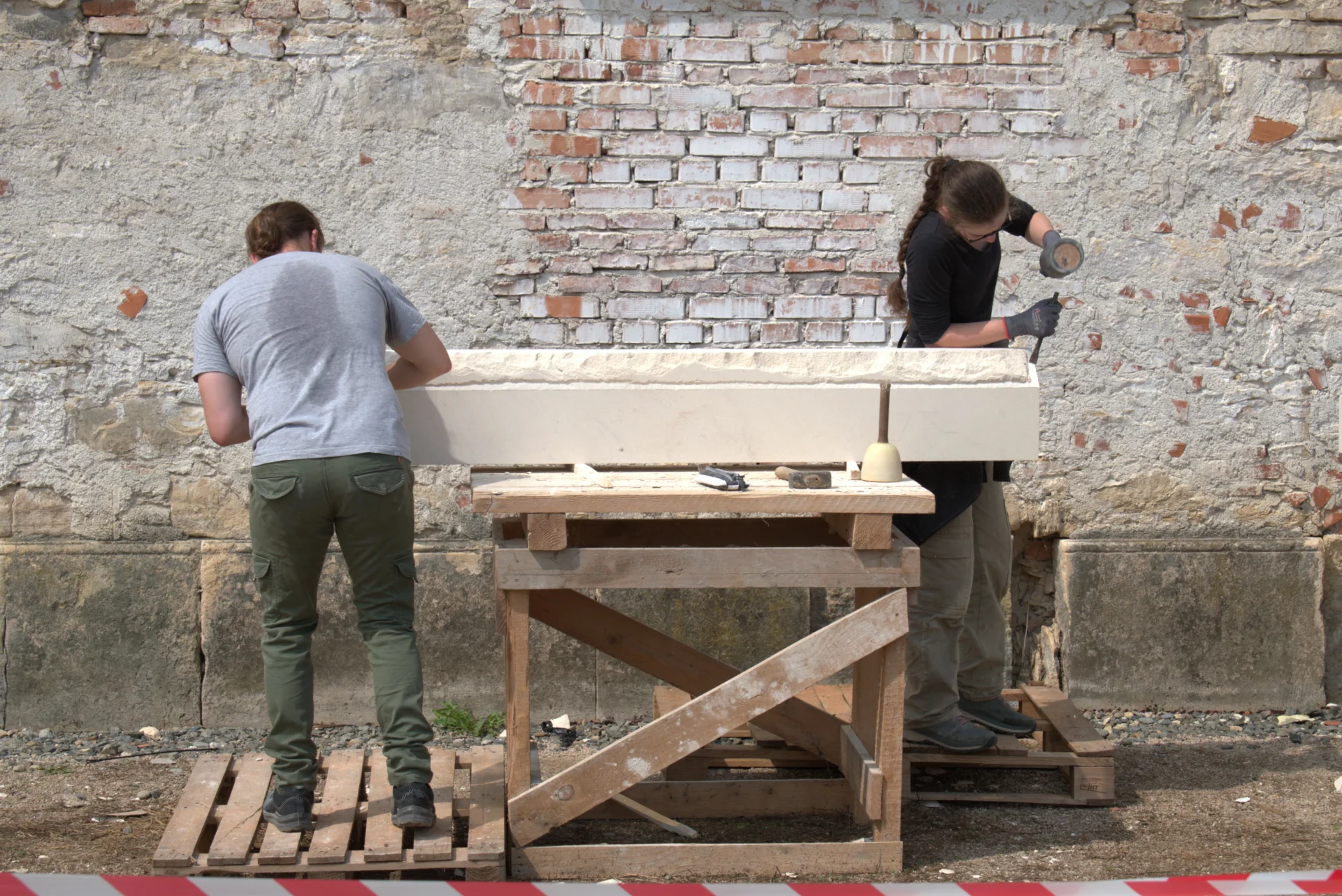
Report: Traditional Building Crafts and Historic Building Conservation
The Transylvania Trust Foundation’s training titled Traditional Building Crafts and Historic Building Conservation, consisting of theoretical lectures and two weeks of intensive hands-on work, took place at Bánffy Castle in Bonțida between 3 and 16 August 2025. The summer camp is part of the project Valorisation of Traditional Building Crafts through Digital and Practical Training.
The training hosted 25 participants from four countries (Romania, Hungary, France, Switzerland) who, alongside expanding their theoretical and practical knowledge, actively contributed to the restoration of Bánffy Castle in Bonțida through masonry, joinery and stone carving workshops. The participants also had the opportunity to learn wall decoration techniques, including fresco, secco, sgraffito and stucco marmorino. During the two-week training, camp members worked on restoring the walls of the stables and of the main building’s northeast tower within the masonry workshop, in the joinery workshop, students learned to create various joints and restored several pieces of furniture, while in the stone carving workshop, participants worked on one of the window frames of the main building, practising both stone carving and techniques for repairing damaged stone elements.
The camp was opened by a series of theoretical lectures that provided the foundation for the practical work. First, archaeologist Zsolt Csók, Technical Director of the Transylvania Trust Foundation, spoke about the role of archaeology in heritage management. Next, architect Nicole Sutton discussed historic building materials, focusing also on minimal intervention, on-going maintenance, and the compatibility of techniques and materials. After that, mining expert Kálmán Szőke presented the stones used in the construction industry and their properties. He was followed by geophysicist István Kudó and geophysicist and geoinformatics engineer Márton Bujdosó, who presented the theory of a non-intrusive research method. Students also attended a lecture by architect Endre Ványolós titled Contemporary Urban Interventions in the Historical Environment. The day concluded with engineer Dorottya Makay’s presentation on structural interventions.
Following the work safety and health protection instructions, the intensive practical training began with a programme led by István Kudó and Márton Bujdosó. Building on the previous day’s theory, participants gained practical familiarity with the work processes of georadar measurements and then, after data processing, interpreted the results under the guidance of the two experts.
The training continued with workshops led by experienced trainers. Márton Bikfalvi, site manager, and his team of craftsmen directed the monument conservation processes and the teaching of traditional building crafts, while István Márton Sipos, stonemason and sculptor, introduced the participants to the craft of stone carving.
During the camp, attendees learned about the history of Bánffy Castle in Bonțida at a lecture by art historian Zsuzsanna Eke, which was complemented by a guided tour around the castle.
As part of the programme, an intensive documentation process was also launched in the form of short video recordings, which continued even after the camp ended. The aim of this activity was to prepare materials for a digital course that will serve as supporting content for those interested or involved in traditional building crafts.
A study field trip was also scheduled into the two-week training. Its first stop was the village of Rimetea, where participants saw traditional houses, an 18th-century mill, visited the Ethnographic Museum and the Unitarian Church. This was followed by the village of Sic, where they visited the mediaeval Reformed Church and the 18th-century Holy Archangels Michael and Gabriel Orthodox wooden Church. The field trip concluded with a walk through the reed beds near Sic, followed by some relaxation at the saltwater public baths in Cojocna.
On the last day of the training, the participants themselves presented the traditional building crafts workshops and the results of their work to each other, to the craftsmen leading the activities and to the interested public, during an open workshop demonstration. This was followed by a written exam assessing the participants’ knowledge. The evaluations were complemented by feedback from the workshop leaders, and those who met the established criteria received a certificate of achievement.
The training programme is co-funded by the National Cultural Fund Administration (AFCN).


